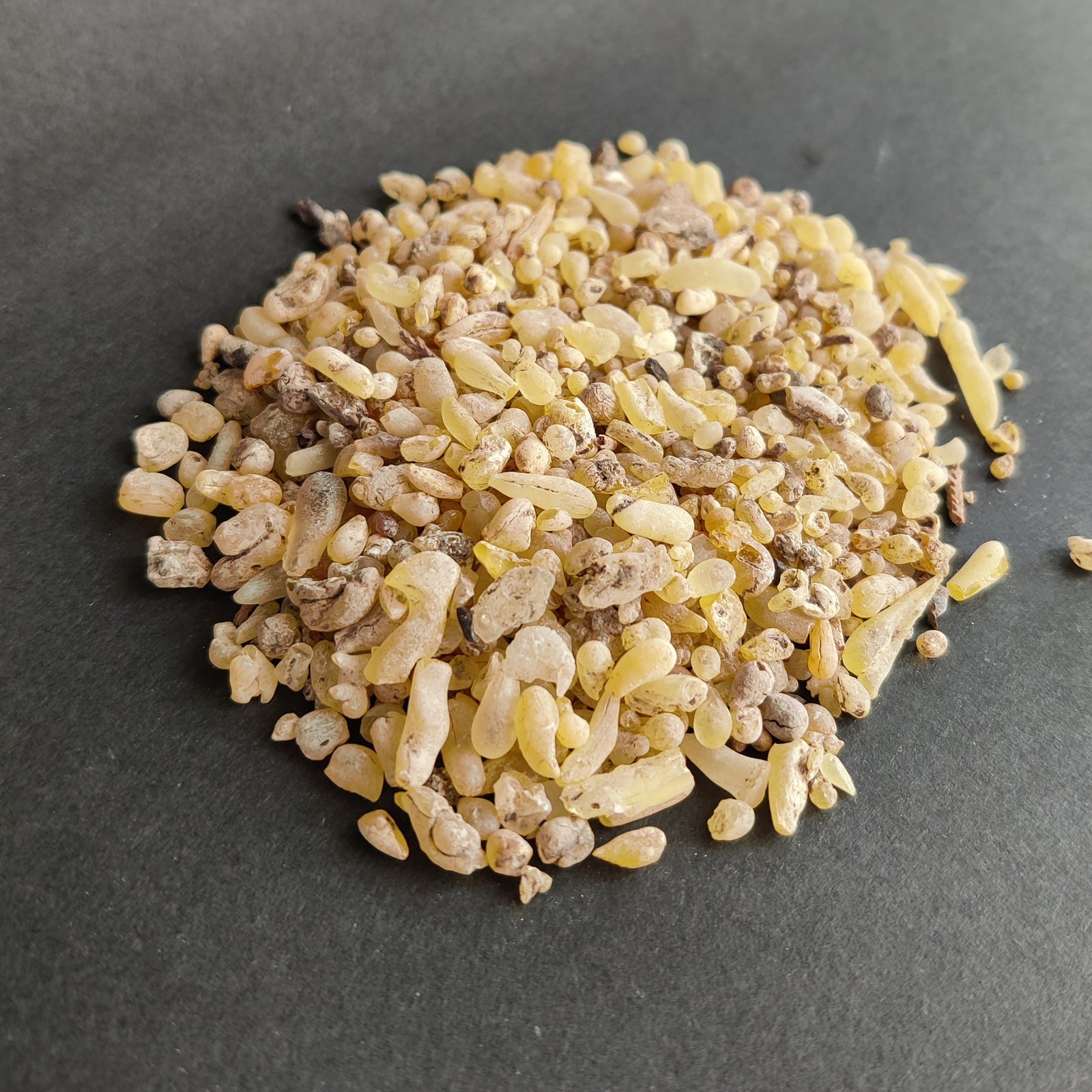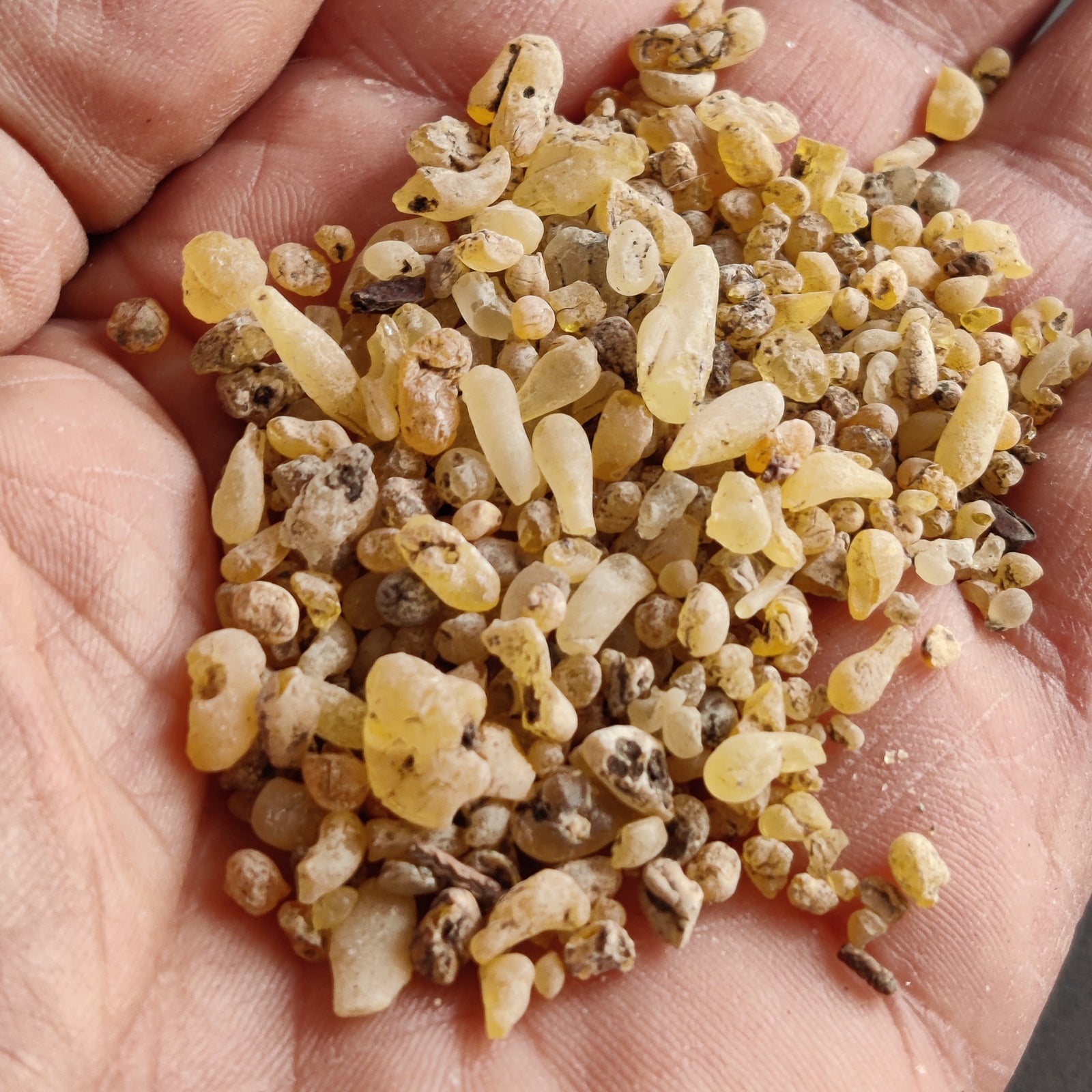


Cypress Resin Tears
Cypress resin tears-Cupressus sempervirens-Turkey-Rare!
As an incense material, Cypress resin tears burn with the warm aroma of precious wood, interwoven with hints of floral notes and a soft, delicate sweetness that reminds me of vanilla.
From Wikipedia:
"In classical antiquity, the Cypress was a symbol of mourning, and in the modern era, it remains the principal cemetery tree in both the Muslim world and Europe. In the classical tradition, the cypress was associated with death and the underworld because it failed to regenerate when cut back too severely. Athenian households in mourning were garlanded with boughs of cypress. Cypress was used to fumigate the air during cremations. It was among the plants suitable for making wreaths to adorn statues of Pluto, the classical ruler of the underworld.
The poet Ovid, who wrote during the reign of Augustus, records the best-known myth that explains the association of the cypress with grief. The handsome boy Cyparissus, a favorite of Apollo, accidentally killed a beloved tame stag. His grief and remorse were so inconsolable that he asked to weep forever. He was transformed into Cupressus sempervirens, with the tree's sap as his tears. In another version of the story, the woodland god Silvanus was the divine companion of Cyparissus and accidentally killed the stag. Silvanus turned him into a tree when the boy was consumed by grief and thereafter carried a branch of cypress as a symbol of mourning.
In Greek mythology, besides Cyparissus, the cypress is also associated with Artemis and Hecate, a goddess of magic, crossroads and the underworld. Ancient Roman funerary rites used it extensively."
Cyparissus (c. 1625) by Jacopo Vignali: the boy mourns his pet deer (Musée des Beaux-Arts de Strasbourg)
The connection between Cypress and the water element is also found in its association with death and grieving, one of the aspects of the Moon, which embodies the cycle of life and death represented in the ebb and flow of the seas, the cycle of the New Moon and Full Moon. Moon and Pluto-ruled plants are often associated with death and grieving. Among them is Myrrh, a resin reserved for funerary rites and embalming the dead in ancient Egypt. Interesting to note that in classic Mythology, the Myrrh tree is also associated with grieving, and its resin tears are the tears of Myrrha, who was transformed into a tree., (See my listing for Myrrh resin and more about the myth of Myrrha here.
Another interesting parallel between Myrrh and Cypress is that Myrrha was the daughter of King Cinyras of Cyprus...Cyprus, Cypress???
Cypress wood contains a high % of oleoresin and a compound called Cypressine, which acts as a preservative, retards decomposition and makes Cypress wood both fragrant and water-repellant. It is still used today for constructing Piers, caskets, boats, stadium seats and staves for wooden barrels.
A pure oleoresin with no water-soluble gum content, Cypress resin tears are impervious to water and dissolve in alcohol and essential oils. It emits little fragrance at room temperature, but once heated on the coal, it reveals a beautiful character and depth of aroma.
Like its cousin Sandarac, Cypress resin tears are a classic commodity we have been trading and using for thousands of years.
Dan
Dan
Materials: Cupressus Sempervirens, Cypress resin, Cypress Tears.






